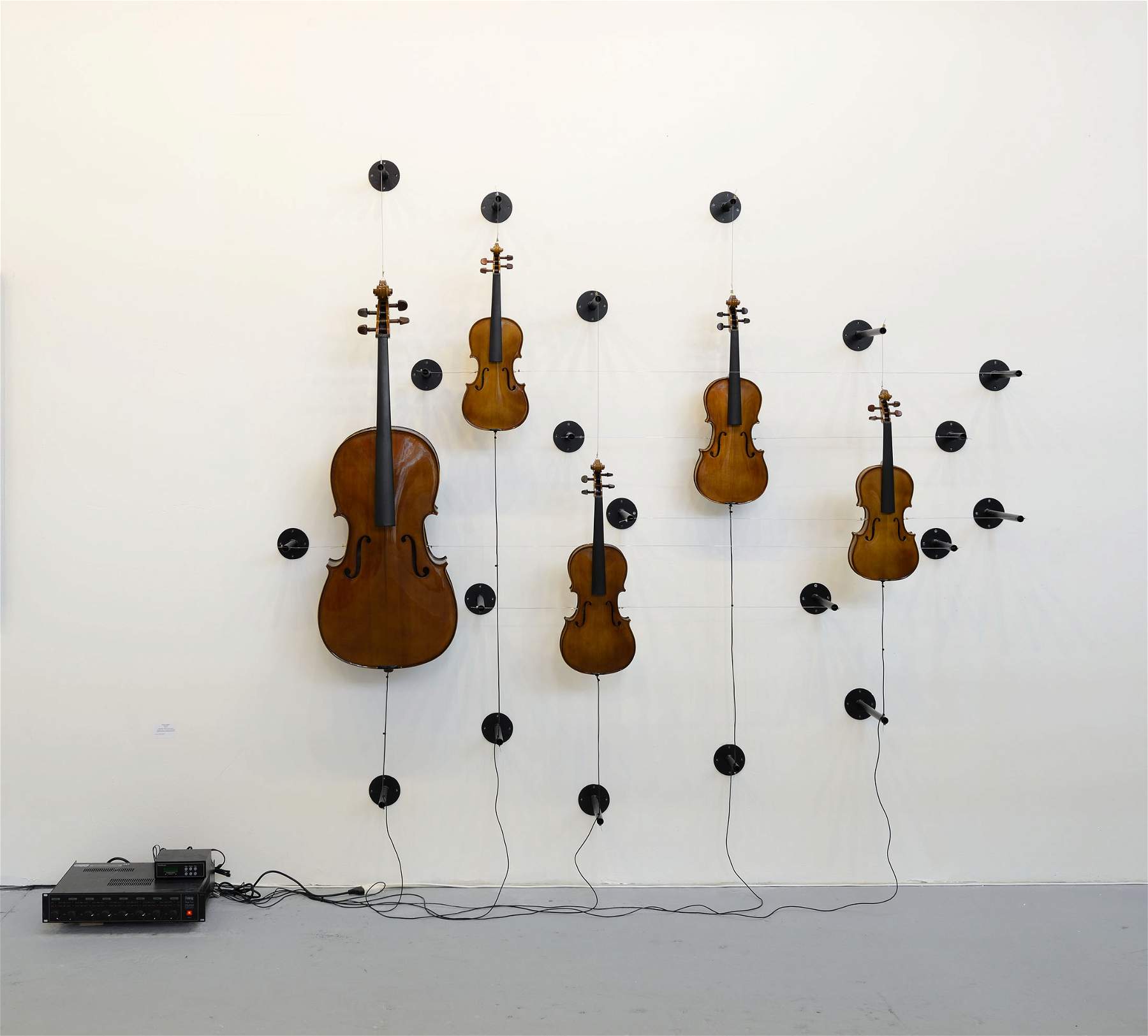Scheduled from September 19 to October 19, 2018, at the Fondazione Arnaldo Pomodoro in Milan, is the exhibition Concerto per architettura, a solo show by Roberto Pugliese (Naples, 1982), the second event in the new cycle of Project Room reviews organized by the Foundation and reserved for young artists and young curators. For 2018, Project Room has been entrusted to curator Flavio Arensi, who has constructed a project in three acts, entitled Proust’s Room, and aimed at observing the happenings of society and man through sounds, absences and presences, of the past as well as the future. The three moments in this room will form a single reflection on the role of sculpture at this moment in history. “With the three artists involved in the 2018 Project Rooms,” Arensi stresses, “we intend to recover, through their work, the idea of an expanded consciousness that does not use the more traditional means of sculpture but searches for its deeper concepts through technology and space.”
Thus the Arnaldo Pomodoro Foundation, after hosting Donato Piccolo, gives space to the Neapolitan artist Roberto Pugliese, who with his Concerto per architettura has devised an audio composition made ad hoc for the spaces of the Project Room, whose architectural plans were used to rework some numerical values later assigned to a series of genetic algorithms and complex functions. These processes, through an acoustic-mathematical relationship, served to generate sound material that was subsequently reworked by Pugliese. The result is a sound sculpture that spreads through the spaces of the Foundation making the most of architectural resonances in a way that gives back to the space its own “voice.”
“This sort of musical interlude between the first and the last act,” Arensi further explains, “also marks the extreme point of a research that makes sculpture a new linguistic system, in which space and sound become an intrinsic value of the work. The theme of sculpture, then, goes beyond the simple scheme of light-space-matter to enter a new semiotic method in which the object is joined by sound. If with Piccolo the viewer was called to confront the machine-sculptures, which learned to manage themselves through confrontation with the human being, with Pugliese we come to confront the vibrational/frequential nature of matter. With a minimal and rigorous set-up, Roberto Pugliese’s work asks the visitor to participate along with the space in the musical system; after all, the great Romanian conductor himself, Sergiu Celibidache, could not make the listening of the musical composition separate from the human and experiential dynamics of the theater audience.”
Roberto Pugliese was born in Naples in 1982, where he was trained; he currently lives and works in Bari. After graduating in Electronic Music at the Conservatorio San Pietro a Majella in Naples under the guidance of maestro Agostino di Scipio, he divides his time between teaching at the Bari Conservatory (chair of Multimedia), musical activity and the production of sound installations. His research draws energy mainly from two artistic currents, that of sound art and that of kinetic and programmed art. Making use of mechanical equipment driven by software that interacts with each other, with the environment around them and with the user, he intends to examine new points of research on phenomena related to sound, on the analysis of the processes that the human psyche uses to differentiate structures of natural origin from artificial ones (both acoustic and visual), on the relationship between man and technology, and on the relationship between art and technology, without ever losing sight of the visual aspect. Sound thus becomes both an object of research and a means of acoustic and visual expression, a vital energy that animates the inanimate, a guide to analyze and stimulate the human psyche and perception.
The exhibition can be visited Tuesday through Friday and every second Saturday of the month, 11 a.m.-1 p.m. and 2-7 p.m. Admission is free. For information you can visit the Arnaldo Pomodoro Foundation website.
Pictured: Roberto Pugliese, Quintet (2016; cello, violins, violas, harmonic steel, iron, multichannel audio reproduction system and audio composition, environmental dimensions). Courtesy Studio la Città - Verona, photo Michele Alberto
 |
| Can an architecture play music? Here is Roberto Pugliese's Concert for Architecture, on display in Milan. |
Warning: the translation into English of the original Italian article was created using automatic tools. We undertake to review all articles, but we do not guarantee the total absence of inaccuracies in the translation due to the program. You can find the original by clicking on the ITA button. If you find any mistake,please contact us.